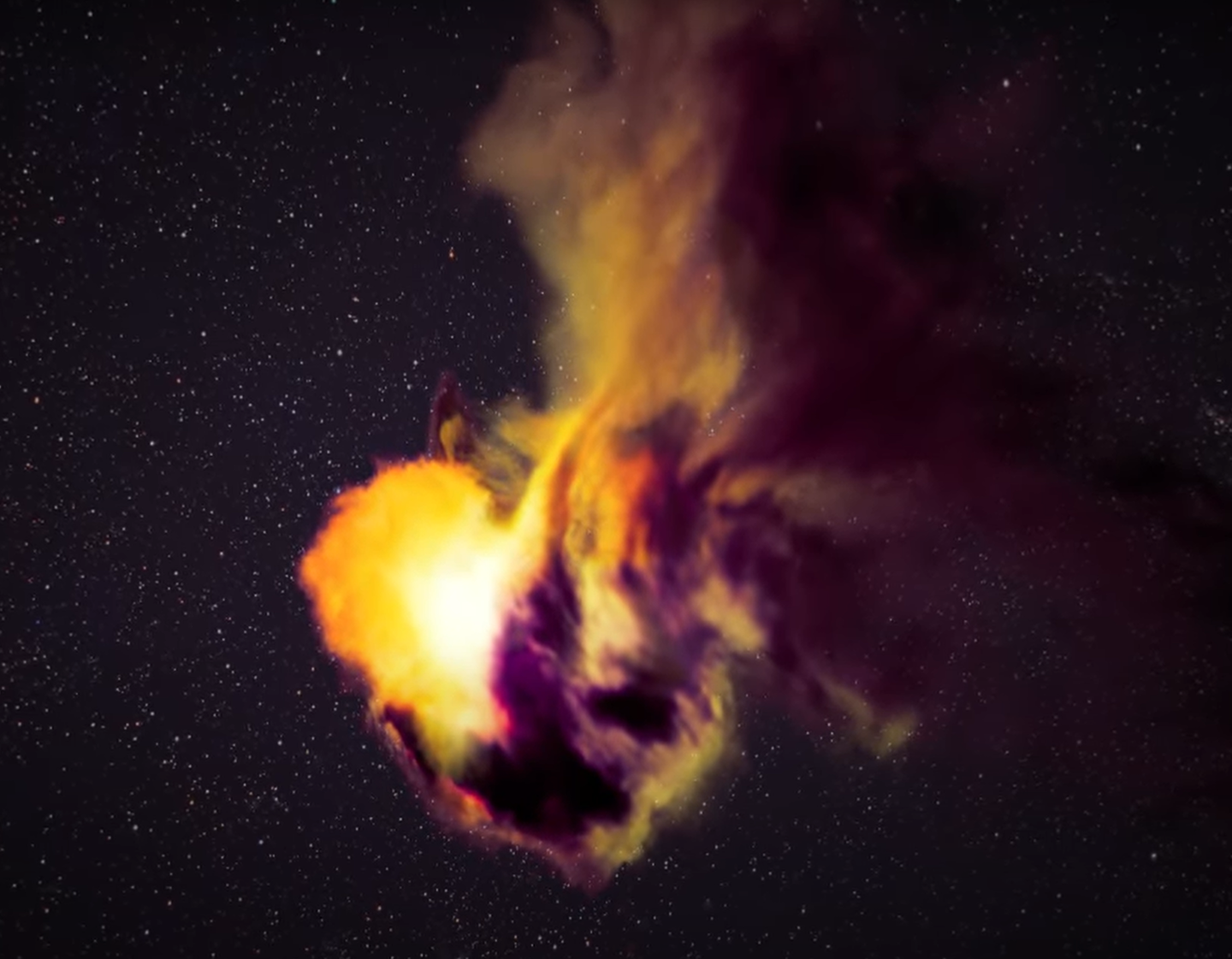Fist-of-its-kind supernova offers rare look into the explosive death of a star
Astronomers have seen a lot of stars explode, but one unusual stellar death is forcing them to rethink what they thought they knew.

A rare star explosion called SN2021yfj revealed silicon and sulfur-rich layers usually hidden deep inside. (CREDIT: W.M. Keck Observatory/Adam Makarenko)
Astronomers have seen a lot of stars explode, but one unusual stellar death is forcing them to rethink what they thought they knew. In 2021, a star about 2.2 billion light-years away ended its life in a dazzling supernova unlike anything on record. The blast, named SN2021yfj, was packed with silicon, sulfur, and argon—heavy elements normally buried deep inside a star, far from view.
Instead of being wrapped in hydrogen and helium like most supernovae, this star had been stripped almost completely bare. Its eruption gave scientists a rare peek into the deeper layers of a giant star, proving that under the right circumstances, the skeleton of a star can be exposed before it blows apart.
“This is the first time we have seen a star that was essentially stripped to the bone,” said Steve Schulze of Northwestern University, who led the study. “It shows us how stars are structured and proves that stars can lose a lot of material before they explode.”
The Onion-Like Life of a Massive Star
Big stars live fast and die young. They can weigh ten to a hundred times more than our sun, and the crushing pressure in their cores fuels nuclear fusion. That process fuses lighter elements into heavier ones: hydrogen becomes helium, helium becomes carbon, and the chain continues until iron is formed.
Scientists often describe these stars as onions. Their outer skins are made of hydrogen and helium, while deeper layers contain heavier elements like carbon, oxygen, silicon, and sulfur. Normally, when such a star explodes, telescopes pick up the outer layers—hydrogen, helium, and sometimes carbon and oxygen. But SN2021yfj broke the pattern. It was a cosmic onion stripped down almost to its core, revealing elements scientists had never before seen so clearly in a supernova.
Adam Miller, a co-author of the study at Northwestern, put it bluntly: “This event quite literally looks like nothing anyone has ever seen before. It was almost so weird that we thought maybe we didn’t observe the correct object.”
Related Stories
- Supernova explosion blamed for two extinction events on Earth
- New supernova discovery may hold key to the history of the Universe
The Discovery of SN2021yfj
Schulze first spotted the strange explosion in data from the Zwicky Transient Facility, a powerful telescope in California that scans the sky for short-lived events like supernovae. The object stood out immediately—bright, unusual, and in a galaxy buzzing with star formation.
To figure out what it was made of, the team needed a spectrum, a breakdown of light that reveals the chemical fingerprint of an object. For a while, it seemed they had missed their chance. Clouds blocked some telescopes, and others weren’t available. Then, in a stroke of luck, a colleague at UC Berkeley secured a spectrum using the Keck Observatory in Hawai‘i.
That spectrum confirmed the odd signature: strong signals of silicon, sulfur, and argon, with almost no sign of the lighter gases normally expected. Without that single observation, the discovery might have slipped away.
“We saw an interesting explosion, but we had no idea what it was,” Schulze said. “Almost instantly, we realized it was something we had never seen before.”
A Violent Ending
The mystery now is how this star shed so much of itself before its final collapse. Other stripped stars have lost hydrogen and helium, but none had been peeled so deeply. Schulze and Miller suggest the star may have torn itself apart in violent fits, ejecting layers of material in bursts.
Each time its core ran out of fuel, gravity squeezed inward, reigniting fusion in a powerful surge. Those surges could have blasted away one shell of material after another, like peeling back coats in quick succession. By the time the final explosion came, all that was left were the heavy, inner layers.
The supernova’s blast then plowed into the shells the star had tossed off earlier. The collision lit up space like a cosmic flare, producing the bright glow seen from billions of light-years away.
“This star lost most of the material that it produced throughout its lifetime,” Schulze explained. “So, we could only see the material formed during the months right before its explosion. Something very violent must have happened to cause that.”
Expanding the Textbooks
SN2021yfj challenges long-held models of how stars die. The discovery provides direct proof that massive stars can shed nearly everything and still unleash a brilliant supernova.
For scientists, that means the life cycle of stars is more complex than once believed. There may be exotic death pathways—strange scenarios in which stars behave differently than expected. As Miller said, “It’s not that our textbooks are incorrect, but they clearly do not fully capture everything produced in nature.”
For now, SN2021yfj remains the only example of its kind. One rare star isn’t enough to rewrite the rules, but it points the way forward. “While we have a theory for how nature created this particular explosion, I wouldn’t bet my life that it’s correct,” Miller said. “This star really underscores the need to uncover more of these rare supernovae.”
Practical Implications of the Research
The findings give scientists a clearer picture of how heavy elements like silicon and sulfur are formed and spread across the universe. These elements are essential building blocks for planets and, ultimately, for life itself. By studying events like SN2021yfj, astronomers can better understand how matter is recycled through generations of stars.
The research also helps refine models of stellar evolution, improving predictions about what kinds of supernovae might appear in the future. That knowledge can shape how scientists use next-generation telescopes to scan the skies.
As rare events like this are uncovered, they could reveal unknown processes in the universe that connect the lives of stars to the chemistry of galaxies—and even to the elements on Earth.
Research findings are available online in the journal Nature.
Note: The article above provided above by The Brighter Side of News.
Like these kind of feel good stories? Get The Brighter Side of News' newsletter.



